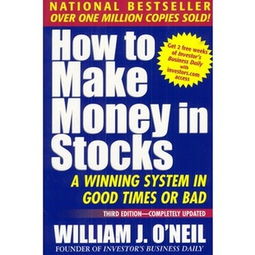Understanding Pay-Per-Click (PPC)

Pay-Per-Click (PPC) is a popular online advertising model where advertisers pay a fee each time one of their ads is clicked. This method is widely used on search engines like Google and Bing, as well as social media platforms such as Facebook and Instagram. If you’re looking to make money from PPC, here’s a detailed guide to help you get started.
Choosing the Right Platform

The first step in making money from PPC is to choose the right platform. Google Ads is the most popular PPC platform, followed by Bing Ads and social media platforms. Each platform has its own set of features and benefits, so it’s important to research and select the one that best suits your needs.
| Platform | Target Audience | Cost | Best for |
|---|---|---|---|
| Google Ads | Searchers looking for specific products or services | Varies based on competition and keywords | Local businesses, e-commerce, and service providers |
| Bing Ads | Searchers looking for specific products or services | Varies based on competition and keywords | Local businesses, e-commerce, and service providers |
| Facebook Ads | People interested in specific topics or demographics | Varies based on competition and targeting | Brands, e-commerce, and social media influencers |
| Instagram Ads | People interested in specific topics or demographics | Varies based on competition and targeting | Brands, e-commerce, and social media influencers |
Setting Up Your Account

Once you’ve chosen a platform, the next step is to set up your account. This involves creating an account, verifying your payment method, and setting up your campaign. Be sure to familiarize yourself with the platform’s interface and tools, as this will help you create effective ads and manage your campaigns.
Keyword Research
Keyword research is a crucial step in PPC advertising. It involves identifying the words and phrases that potential customers are searching for. Use tools like Google Keyword Planner, SEMrush, or Ahrefs to find relevant keywords with high search volume and low competition. This will help you create targeted ads that are more likely to be clicked.
Creating Effective Ads
Your ad’s copy, design, and call-to-action (CTA) are essential for driving clicks. Here are some tips for creating effective ads:
-
Use compelling headlines and descriptions that highlight your product or service’s benefits.
-
Incorporate relevant keywords to improve your ad’s relevance and ranking.
-
Use eye-catching images or videos to grab attention.
-
Include a clear and compelling CTA, such as “Buy Now” or “Learn More.”
Setting Your Budget and Bidding Strategy
Decide how much you’re willing to spend on your PPC campaigns and set a budget accordingly. You can choose from various bidding strategies, such as manual CPC (cost-per-click) or automated bidding. Manual CPC allows you to set a maximum bid for each keyword, while automated bidding uses machine learning to optimize your bids for the best possible performance.
Monitoring and Optimizing Your Campaigns
Regularly monitor your campaigns to track their performance and make adjustments as needed. Use the platform’s reporting tools to analyze your ad’s click-through rate (CTR), conversion rate, and return on ad spend (ROAS). This data will help you identify areas for improvement and optimize your campaigns for better results.
Expanding Your Reach
Once you’ve mastered the basics of PPC, consider expanding your reach by experimenting with different ad formats, targeting options, and platforms. This can help you tap into new audiences and increase your chances of making more money from PPC.
Conclusion
Making money from PPC requires time,



